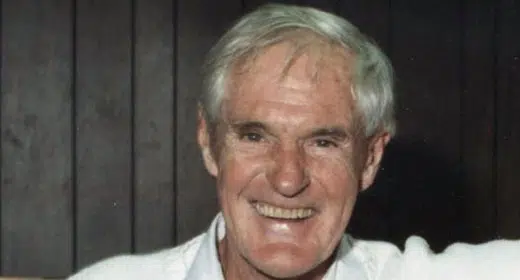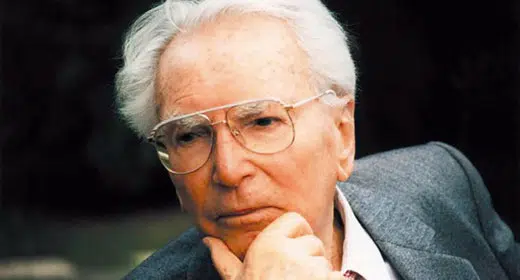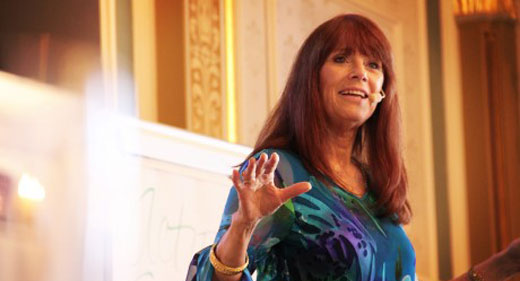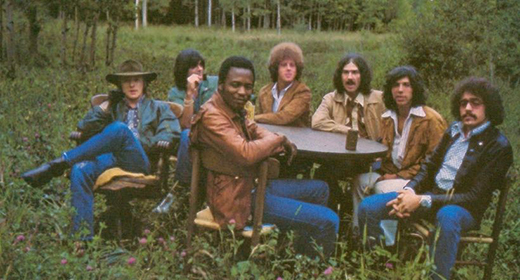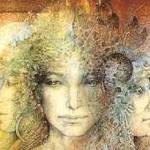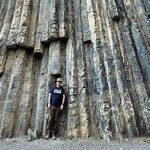by Ken Wilber: It was my deep pleasure and honor to know Brother Wayne Teasdale. As Kurt points out in his book, The Coming Interspiritual Age,  I was graced to be a participant in some of the very last dialogues that Brother Wayne undertook in this life, and they were always touched by grace and love and beauty and deep truth. Brother Wayne came to see Integral Theory as a foundational theory for Interspirituality, and we spoke often about this important theme. In a certain sense, these two movements were born together, or at least in parallel, with Interspirituality tracing the practical and theological aspects of interweaving the world’s Great Traditions and Integral Theory offering one of the first believable and workable frameworks to carry out this noble aim (hence Brother Wayne’s interest in it).
I was graced to be a participant in some of the very last dialogues that Brother Wayne undertook in this life, and they were always touched by grace and love and beauty and deep truth. Brother Wayne came to see Integral Theory as a foundational theory for Interspirituality, and we spoke often about this important theme. In a certain sense, these two movements were born together, or at least in parallel, with Interspirituality tracing the practical and theological aspects of interweaving the world’s Great Traditions and Integral Theory offering one of the first believable and workable frameworks to carry out this noble aim (hence Brother Wayne’s interest in it).
But there was nothing merely theoretical in Brother Wayne’s interest—he lived what he believed; he walked the talk he was learning and applying daily, and with heroic courage and dedication. The key to Brother Wayne’s success in introducing Interspirituality to the world lay in his bringing together deeply Realized beings from virtually every tradition, putting them together in one place, and allowing them to discover their truly fundamental and universal agreements. The key to Integral Theory was putting all the world’s Great Traditions on the table at once, and then creating a Composite Map that covered all the bases and dimensions in a human being, using each Tradition to fill in gaps left by the others. This Composite or World Map allowed each Tradition to see how they were all “true but partial” aspects of Humanity’s Great Spirituality, and thus gave them all a Grid they could easily hang their own Tradition’s spiritual Truths on, without denying or denigrating any others. Thus, embracing a truly Integral Interspirituality allowed each seeker to be a “dual citizen”—embracing both an Integral Map and their own Tradition’s version of that Map—thus being a member of all Traditions as well as one’s own.
The Integral Framework consists of 5 major elements (culled from a study of premodern, modern, and postmodern maps)—known as quadrants, levels, lines, states, and types. Quadrants are the basic dimension/perspectives that all occasions possess—an interior and an exterior, and an individual and a collective (giving 4 major grids or “quadrants”—the inside and outside of the individual and the collective, represented by pronouns such as I, We, It, and Its, resp.). These 4 quadrants are often simplified to “the Big 3”—I, We, and It; or Beauty, Goodness, and Truth; or art, morals, and science; or Buddha, Sangha, and Dharma; or the Trinity. But by claiming that all occasions possess these 3 or 4 dimensions, Integral Theory claims that Spirit itself can be looked at in 1st-person terms (the innermost highest Spirit-Self or “I-I”); in 2nd-person terms (as a Great Thou, as in Buber’s I-Thou relation); and in 3rd-person terms (a Great Web of Life or Gaia). Neither of those is more real or more important—they are all dimensions of the same Spirit seen from different perspectives (or different quadrants).
“Levels” refers to “levels of consciousness” or “structures of consciousness,” such as Jean Geber’s archaic stage, magic stage, mythic stage, rational stage, pluralistic stage, and integral stage. Each of those levels (in their numerous versions) has a different view of God or Spirit (as shown by, e.g., James Fowler’s research). Understanding which structure-stage a person is at will help understand how and why that person understands Spirit as they do. Again, none of the stages are simply right or simply wrong. Each stage is adequate; each succeeding stage is more adequate.
“Lines” refers to “developmental lines.” Through each of those just mentioned developmental levels, various developmental lines grow and evolve. These are often known as “multiple intelligences”—cognitive intelligence, emotional intelligence, moral intelligence, self intelligence, interpersonal intelligence, kinesthetic intelligence, aesthetic intelligence, spiritual intelligence, and so on. Thus, “levels and lines” go together, with each line developing through the various levels (so that a person could be highly developed in, say, cognitive intelligence, mediumly developed in emotional intelligence, and poorly developed in spiritual intelligence).
“States” refers to “states of consciousness,” which differ from “structures of consciousness” in that structures always unfold in stages or levels of development, whereas states generally just come and go—they arise, stay a bit, and then pass. Waking, dreaming, and deep formless sleep are common natural states of consciousness.
When, however, states are trained, then they tend to unfold in stages as well, and these are the major stages of meditative development. In meditation, Awareness or Wakefulness moves from the waking or gross state into the dream, visionary, or subtle state; then into the formless, unmanifest, causal state; and from there into unity or nondual states of ever-present Awareness.
(This, by the way, is why the developmental stages that Western psychology has discovered—such as archaic to magic to mythic to rational to pluralistic to integral–don’t match up with any of the stages of meditation from any of the world’s Great Traditions, although the Traditions all tend to agree with each other, seeing some version of gross states to subtle states to causal states to nondual states. The reason they differ is that the stages Western psychology studies are stages of the major structures of consciousness; while meditation activates the stages of the major states of consciousness. Both of these developmental sequences are important: the former governs how we GROW UP, the latter governs how we WAKE UP. Both are necessary for a truly Integral Spirituality.)
“Types” refers to any number of typologies, old, new, and everything in between, including the Enneagram, masculine-feminine, Myers-Briggs, NLP techniques, and so on. Any of the types in any of those can occur at any level or line, and so they are an additional aspect needed to be included. People at different types usually have different approaches to spirituality (although again, none are inherently “the best”).
As we said, few if any of the Great Traditions cover all these bases. For the Composite or World Map, each was used to fill in the gaps in the others (along with Western psychology and other disciplines). This is why “dual citizenship” is generally so important for any spiritual seeker—it’s important to understand where one is on each of those 5 major dimensions, which are fully compatible with the major tenets of one’s own background Faith. By filling out one’s Faith using the Integral Framework, one can immediately make their Faith “integral” or “comprehensive” or “holistic” or “interspiritual”—as well as bring it up to speed in the modern and postmodern world. Of course, any number of other dimensions and variables can be added to this Framework; it is simply a model of the minimum one needs to generate a World Spirituality.
But in creating a worldwide Integral Framework for spirituality, we have the (or at least a) foundational Framework for an Interspiritual approach to Spirit or ultimate Being. We can see 1st-, 2nd-, and 3rd-person perspectives on Spirit, and see each of those develop through various levels and lines. Further, we can approach that universal Spirit in direct experiential terms by developing through the various states of consciousness, with each deeper state coming “closer” to ever-present Spirit, and opening us to a deeper Presence in the timeless Now. Meanwhile, the spiritual intelligence structures of consciousness give us higher and wider and increasingly sophisticated and mature interpretations of the various spiritual states, moving from an archaic view to a magical view to a mythic-literal view to a rational view to a pluralistic view to an integral view—with each increasing view capable of taking more and more perspectives, resulting in increasing capacities of love, consciousness, compassion, care, gratitude, and service. Moreover, the Integral Framework allows us to see the many commonalities in the world’s Great Traditions, as well as act to fill in any gaps each of them might have missed. This is truly an Interspiritual approach to the Ground of Being, and one made available only recently in humankind’s history, making this a very exciting time to be alive! And a time to be very grateful to Brother Wayne (and so many other integral pioneers) for making us all more aware of the extraordinary possibilities—and responsibilities—that this entails.

